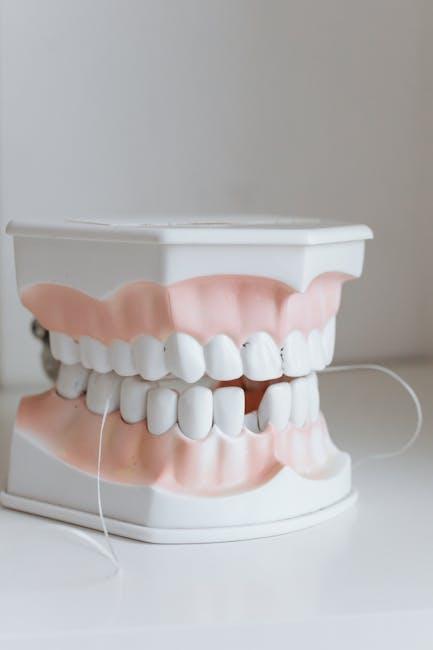Fluoride Ban Could Create Cavities For 1 Of Every 3 U.S. Kids – U.S. News & World Report
The discussion around fluoride in public water supplies has intensified in recent years. While some advocate for banning fluoride, citing health concerns, emerging research suggests that such a ban could significantly impact children’s dental health. According to a recent U.S. News & World Report article, a fluoride ban could potentially increase cavities in 1 out of every 3 children across the United States. This alarming prediction highlights the crucial role fluoride plays in cavity prevention and overall oral health.
Why Is Fluoride Important For Dental Health?
Fluoride is a naturally occurring mineral widely recognized for its ability to strengthen tooth enamel and prevent tooth decay. Since its introduction into public water supplies in the mid-20th century, fluoride has been credited with dramatically reducing the prevalence of cavities among children and adults alike.
- Strengthens enamel: Fluoride helps rebuild weakened tooth enamel, making it more resistant to acid attacks from plaque bacteria and sugars.
- Reduces cavities: Studies show a significant decrease in dental cavities among populations with fluoridated water compared to those without.
- Cost-effective public health measure: Fluoridation of community water serves as a preventive intervention that benefits all residents regardless of socioeconomic status.
The Impact Of A Fluoride Ban On U.S. Kids’ Oral Health
The potential ban on fluoride in public water systems could trigger a public health setback. Based on research cited by U.S. News & World Report, dental health experts estimate that removing fluoride would cause a cavity surge affecting around one-third of U.S. children.
Why Are Kids More Vulnerable?
- Developing Teeth: Children’s teeth are still forming, making enamel more susceptible to acid erosion and decay.
- Dietary Factors: Many children consume sugary snacks and beverages that increase cavity risk.
- Limited Access to Dental Care: Fluoride acts as a safety net for kids who may not receive regular dental check-ups or treatment.
Fluoride Ban vs. Cavity Rates – Key Statistics
| Scenario | Estimated Cavity Rate in U.S. Kids | Public Health Impact |
|---|---|---|
| Current Fluoride Levels in Water | Approximately 20% | Reduced tooth decay, healthier smiles |
| If Fluoride Is Banned | About 33% (1 in 3 kids) | Increased dental treatment needs, higher costs |
Benefits Of Maintaining Fluoride In Water Supplies
Beyond preventing cavities in children, fluoride offers wide-ranging benefits for community health:
- Equitable Protection: Fluoride benefits people across all income levels, helping reduce health disparities.
- Supports Adult Dental Health: It helps reduce root decay and gum disease in adults.
- Cost Savings: The reduced need for dental treatments lowers medical expenses on a population level.
- Safe And Regulated: Public water fluoridation is carefully controlled and monitored for safety by health authorities.
Practical Tips To Prevent Cavities Without Fluoride Water
If a fluoride ban were to be implemented, parents and caregivers can take proactive steps to protect children’s teeth:
- Practice Good Oral Hygiene: Brush teeth twice daily with fluoride toothpaste and floss regularly.
- Limit Sugary Foods and Drinks: Reducing sugar intake lowers the risk of acid-producing bacteria.
- Dental Visits: Schedule regular dental check-ups and professional cleanings.
- Consider Fluoride Supplements: Consult your dentist about alternative fluoride therapies if fluoride water is unavailable.
- Encourage Water Consumption: Drinking plenty of water helps wash away food debris and reduces acid buildup.
Case Study: Fluoride Removal and Impact on Child Cavity Rates
One notable example comes from a midwestern city that stopped fluoridating its water supply in 2019 following public pressure. Within two years, local dentists reported a noticeable increase in childhood cavities, especially in low-income neighborhoods.
| Year | Child Cavity Rate (%) | Fluoride Status |
|---|---|---|
| 2018 | 18% | Fluoridated Water |
| 2021 | 29% | Fluoride Removed |
This real-world example underscores the importance of maintaining fluoride in our water supplies to safeguard children’s oral health across the country.
First-Hand Experience: A Parent’s Perspective
Sarah, a mother of two from Ohio, shared her experience: “When our town briefly stopped adding fluoride to the water, I noticed my youngest had more dental problems despite brushing daily. It was stressful trying to manage cavities that seemed to come out of nowhere. I’ve since ensured they use fluoride toothpaste and visit the dentist more regularly.”
Sarah’s story reflects concerns many parents share about potential fluoride bans and their children’s dental wellbeing.
Conclusion: Why Supporting Fluoride Access Matters
The potential fluoride ban in the U.S. poses serious risks to children’s dental health, potentially leading to cavities in 1 of every 3 kids. Fluoride has proven benefits that are critical in preventing tooth decay, especially among children. Maintaining fluoride in public water supplies ensures equitable dental care access and reduces long-term health costs.
While individual oral hygiene and dietary habits remain important, community-wide fluoridation is a safe, effective, and affordable public health strategy. As discussions continue around fluoride policies, it is vital that parents, healthcare providers, and policymakers prioritize the well-being of future generations by promoting fluoride safety and availability.


